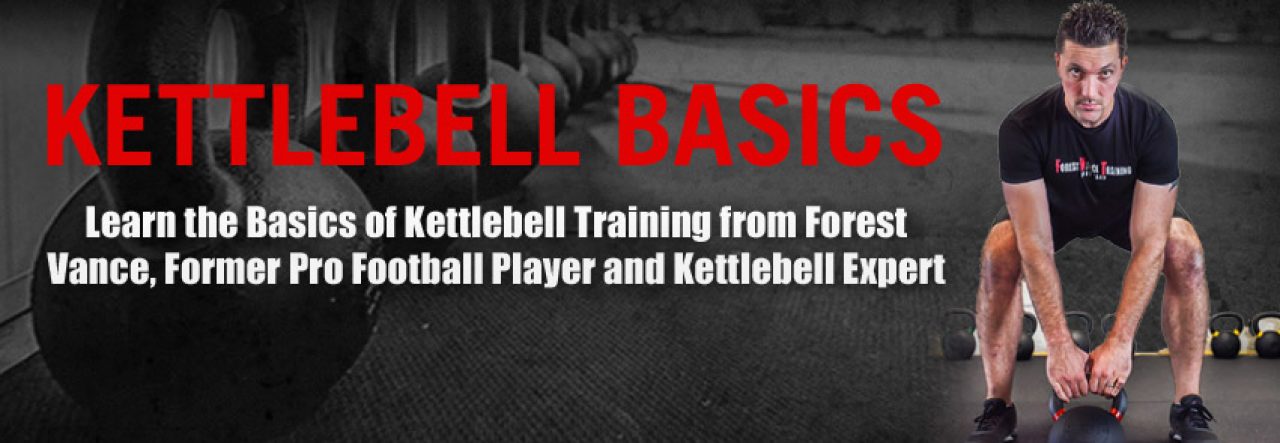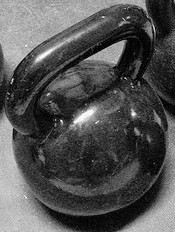I’d like to kick things off here by telling you a little bit about my own experiences with kettlebell training over the last couple of years – for a very specific reason. I think it will be of a great benefit to you as you progress in your kettlebell training career.
I’ve been involved in various athletic endeavors for the last 20 years or so – baseball and basketball in grade school, football and track and field in high school and college, a ‘cup of coffee’ in the NFL, and more recently in triathlons believe it or not (I played offensive line if that gives you an indication of why I say that – I was at about 310 lbs at my biggest).
I still consider myself to still be in pretty good shape. I work out five or six times a week, although admittingly I suffer from a little bit of ‘workout ADD’ (I have trouble sticking with a program for more than three weeks or so). I’ve dabbled in literally almost every imaginable training style, from Olympic Lifting to German Volume Training to CrossFit to HIT – you name it, I’ve probably done it.
About two years ago, I heard a few of my trainer friends were getting into kettlebells, and it sounded interesting. Honestly, my first thought was that there couldn’t be too much to it – nothing more than I could figure out on my own.
So I go buy a couple of kettlebells at the local used sporting goods store. I do a search for ‘kettlebells’ on YouTube to give me an idea of some basic drills (bad idea, in retrospect). There’s some good stuff on there, but there’s also a lot of crap – and I happened to stumble on the crap.
I think my first workout consisted of about 50 clean and presses and 50 snatches. If I remember correctly, an ill locked-out snatch and an actual glancing blow to the head by a kettlebell finished my workout for the day. Luckily, I didn’t do any serious damage, but my wrists were bruised and swollen, along with my ego, for about a week. Not so good.
After a few months of playing around and not really knowing what I was doing (or really getting anything out of it, for that matter), I decided I wanted to do things right. I bought Enter The Kettlebell by Pavel, which in retrospect was what really got the ball rolling and is probably why I’m so into kettlebells today. I went through the book, made detailed notes on everything, and went through the Program Minimum first, followed by the ETK Rite of Passage.
I was shocked at how well the Program Minimum worked! I got stronger, lost a little fat, and actually improved my cardio conditioning with basically less than one hour a week of workouts! I knew at that point I was hooked.
After a couple more months of training almost exclusively with kettlebells and making some great progress, I decided to sign up for the RKC certification because I knew I wanted to take my KB training to the next level.
In short, it was an incredible experience, was extremely physically demanding, and more than anything incredibly educational. I couldn’t recommend the course more to anyone wanting to get serious about kettlebell training.
Another thing I learned from the RKC certification is that perfect execution of the basics is critical. You can get an amazing amount of milage from a few basic kettlebell exericses – in fact, you could probably only do the core five or six drills forever and continue to make progress.
This blog is dedicated to helping you learn the basics really, really well.
Now I use kb’s at least 50% of the time with my one-on-one and group training classes and in my own training. I’m hooked for life, and I hope you soon will be too.
So that’s a few words of warning and some basic advice on where to start. I’ll be frequently updating this blog with basic exercise descriptions, new workouts that have worked well for me and my clients, reviews of books and DVD’s about kettlebell training, and much more. Hope to see you around!
Forest Vance, RKC
P.S. If you’d like to shortcut your learning curve a bit, check out my manual and training course all about mastering the Kettlebell Swing by clicking the link below:
http://kettlebellswingsforfatloss.net/

